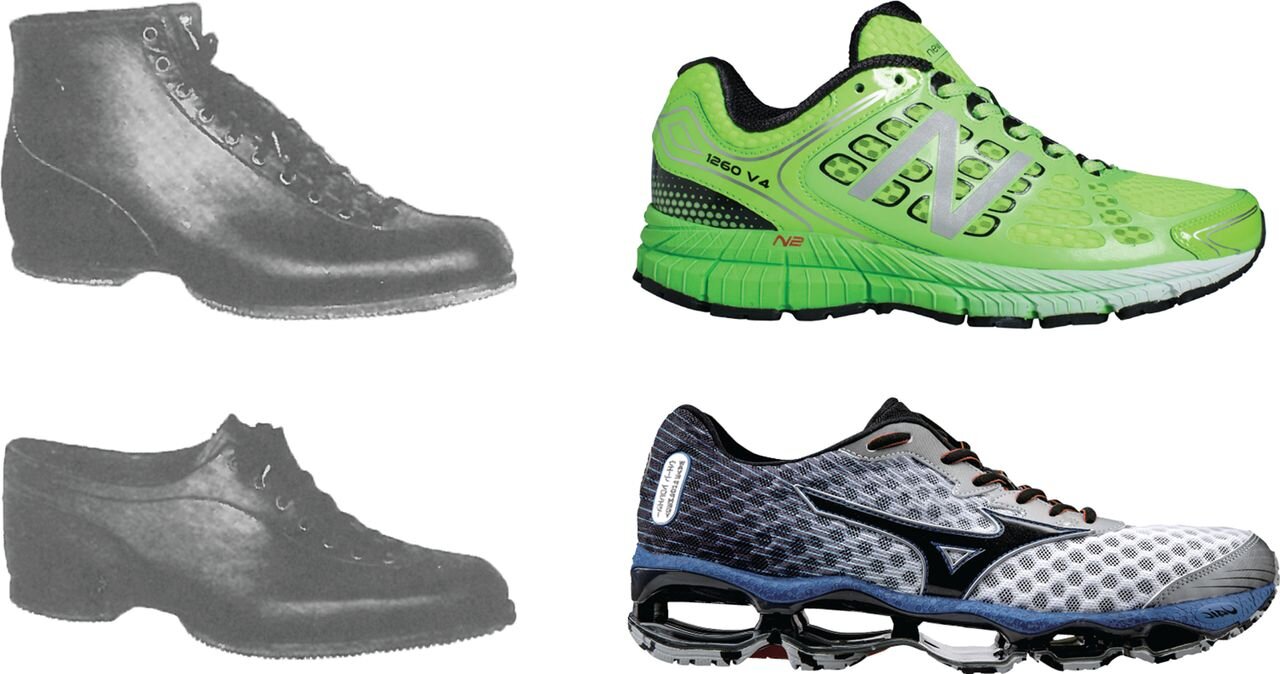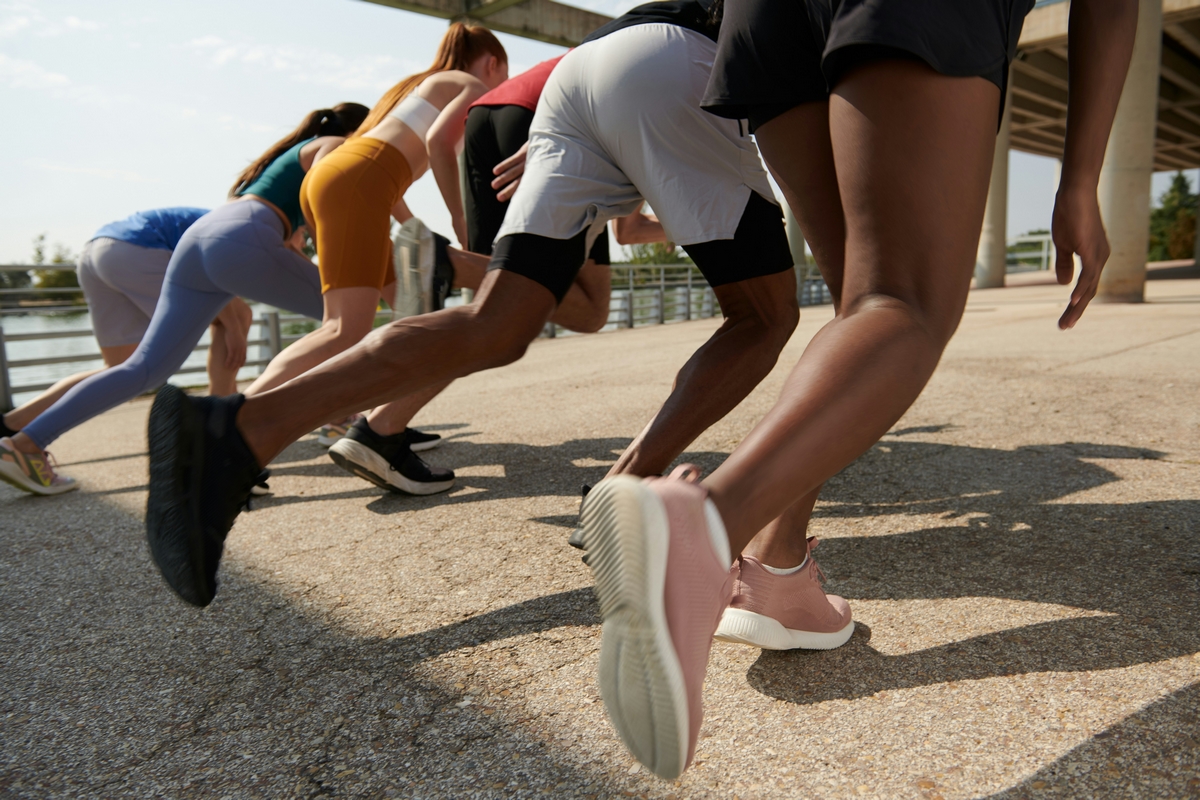PICTURED: The curved toe spring on a modern running shoe in part facilities the runner landing on his heel; the subject of a new study published in Nature.
Wearing footwear with an upward curvature at the front of the shoe ― known as the toe spring ― requires less work from the muscles of the feet to walk than shoes with a flatter sole, according to an experimental study published in Scientific Reports.
Toe springs keep the toes continually elevated above the ground in a flexed upwards position to help the front part of the foot roll forward when walking or running and are present in most modern athletic shoes. However, their effect on natural foot function and the vulnerability of the feet to injury has not been widely studied.
This is because most studies on cushioned running shoes involve examinations in the middle part of the foot, known as the longitudinal arch, often simply called the arch of the foot. Here the foot’s natural muscles act like a spring, one which we evolved for long distance running over millions of years to help cushion the impact forces absorbed by our legs during running.
Since the invention of the modern running shoe during the 1970s, when the major demographics of the running population were changing, scientists have speculated that aspects of the shoe, such as the cushioned arch and now the toe spring, have detrimental effects on performance and injury rates.
One review of the literature published in 2016 suggested that while runners tend to land differently when wearing shoes as opposed to barefoot, there is no conclusive evidence that the cushioned running shoe increases rates of injury, or reduces work input from ankle and foot musculature.
One of the studies reviewed found that impact forces were lessened when barefoot runners impacted on the forefoot rather than the heel, which they hypothesized might help contribute to fewer commonly-reported lower leg running injuries.
In another study, Daniel Lieberman, co author of the new toe spring paper, showed in 2014 there was a 60% increase in stiffness in the foot’s longitudinal arch and an increase in size of 22% in the flexitorum digitorum brevis muscle, and 18% in the abductor digiti minimi muscle, in minimally-shod runners, compared to increases of 11% and 18% respectively for the fully-shod runners.
“There is research that has shown that switching to minimalist shoes with reduced toe springs can cause an increase in foot muscle size in 4-8 weeks,” says Nicholas Holowka, who co-authored the new paper alongside Lieberman.
“However, these minimalist shoes have a lot of other features that could affect foot muscle use, like lack of built-in arch support, so we can’t isolate the lack of toe spring as the design feature that causes this effect yet,” he added, noting that exploration of toe springs will require further tests.
PICTURED: This example of the change in running shoes from the period around the First World War to now shows just how far the science of the running shoe has come.
Taking a load off
In the recent paper, Freddy Sichting, Dan Lieberman, Nicholas Holowka and colleagues investigated the effects of toe springs on foot biomechanics using a controlled experiment in which 13 participants walked barefoot on a treadmill at a comfortable walking pace.
The participants were then asked to repeat the process wearing four different pairs of specially designed sandals with varying upward curvature of the toe region in order to simulate the curvature of modern athletic footwear. 3D motion data were captured using markers placed on each subject’s knee, ankle and foot.
The authors found that toe springs decrease the work of the muscles around the joints that connect the toes to the foot bones. The higher the upwards curve of the toes with respect to the rest of the foot, the less work the foot muscles had to perform to support the joints when walking.
“…the next step would be to see how weaker foot muscles could predispose people to things like plantar fasciitis,” says Holowka.
His colleagues hypothesize that over time, this decrease in work rate could lead to atrophy, and other inflammatory conditions, but Holowka admits they are far from that point.



